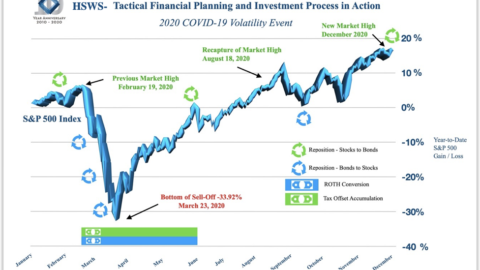
Here are a couple of the common questions that were asked at our “Social Security: What’s Your Strategy?” Lunch & Learn: Hungry for Information Series.
1. When should I start planning my social security strategy?
Your social security strategy should be taken into account any time that you are working through your retirement plan. Social security will likely produce an income stream for you and your family that is equivalent to close to a million dollar investment. Social security is important to discuss with any retirement income planning discussions.
2. Where do I look to find what my social security benefits are?
You can create a “my Social Security” account at www.ssa.gov/myaccount/ using your social security number, address, & email address.
There you’ll be able to:
• Keep track of your earnings and verify them each year
• Get an estimate of your future benefits if you’re still working
• Manage your benefits
3. If I made less than my spouse, why would I choose not to collect my benefits at age 62? They’re “free”, right?
Allie went through a simplified example that showed Ashely & Connor and used a number of very specific assumptions, one that Ashley qualified for benefits but considerably lower than Connor and also that they are the same age. When considering this strategy for your specific situation however, you should be sure to take into consideration age difference and what’s called the “excess spousal benefit”. The excess spousal benefit is the difference between half of your spousal benefit (at full retirement age) and 100% of your benefit.
To put a couple numbers to the example of Ashley & Connor. Assume, Connor’s benefit at full retirement age is $2,000 and Ashley’s at full retirement age is $400. If Ashley were to take her benefit early, it would be reduced by 25% for taking at age 62 opposed to 66 (full retirement age). Therefore, Ashley would collect $300/month for 4 years and then at age 66, receive her spousal benefit, 50% of Connor’s. However, this is not calculated as just 50% of Connor’s benefit, but rather Ashely’s benefit plus the “excess spousal benefit”, which in this scenario would be $300 (Ashley’s reduced early withdrawal benefit) plus $600 excess spousal benefit ($1,000 – $400, 50% of Connor’s benefit – Ashely’s benefit at 66). So at age 66, Ashley would receive $900/month ($300+$600), not $1,000 (50% of Connor’s) because she took her own benefit early.
In this scenario because of the small reduction at age 66 (just $100) it is likely more beneficial for Ashley & Connor to do this because she would receive the $300/month for 4 years. However, if the numbers are different and Ashley’s benefit was higher, this may not be the best strategy. Just another example of discussing/calculating your specific situation before deciding which example you fit into.Click here to set up a meeting to discuss specifics.
4. File & Suspend sounds important, what is the concept again?
For Couples: File & Suspend allows a couple at full retirement age (66 to 67 depending upon when you were born) to increase each individual’s worker’s benefit by 8% annual delayed retirement credits for each year that the benefit start date is deferred until age 70 — while triggering a spousal benefit for one individual. This is accomplished by one of the spouses, generally the one with the higher benefit assuming unequal benefits, applying for his/her worker’s benefit and then immediately filing a notice to suspend payment of his/her benefits. This allows the other spouse to file for his/her spousal benefit which will equal 50% of the filing and suspending spouse’s benefit.

For Single Individuals: File & Suspend is an important step for single individuals as well to “insure their retirement benefits”. By filing at full retirement age (66 to 67) and immediately filing a notice to suspend payment of your benefit will allow you to change your mind. You can go back to the SSA before age 70 to request payment of a retroactive lump sum of monthly benefits that you would have received had you started collecting benefits at full retirement age. Granted you do forfeit any increase that has accumulated, but depending on your situation it may make sense. It’s nice to have options.
5. How do I “run the numbers” to find the best strategy for me?
Fortunately, we have the ability to run all scenarios and answer questions ranging “how long do I have to live to make waiting worth it?” to “how will this affect my plan if I want and pull assets out of my portfolio?” to “Should I take my spouse’s benefit or my own and when?”.Click here to set up a meeting to run the numbers on your specific scenario.

Thank you to all who joined us to discuss social security strategies. Please let us know if you have any additional questions or Click here to set up a meeting to discuss your specific strategy.
Our next Lunch & Learn: Hungry for Information Series will be held in early 2015 discussing the 2014 tax environment, “Take a bite out of taxes”. Stay tuned!










